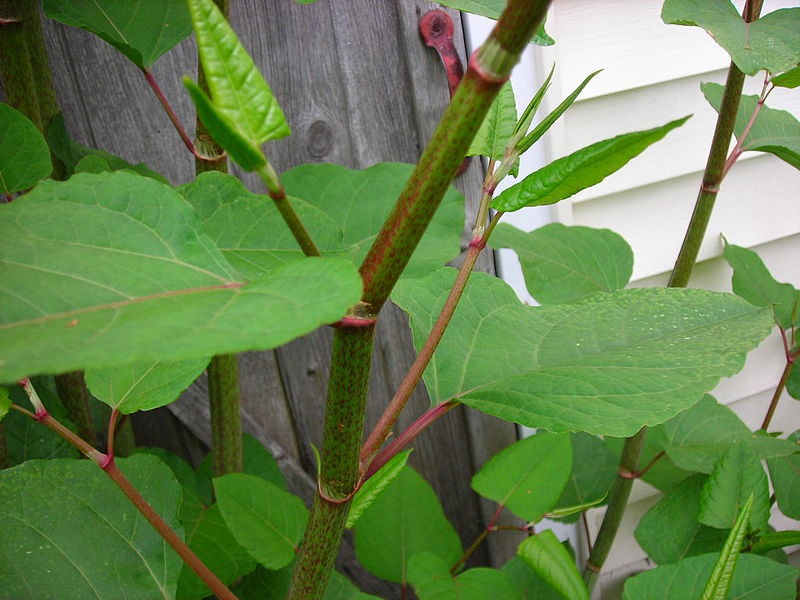What is Japanese knotweed?
Japanese knotweed is an invasive, non-native species that spreads easily and is very difficult to get rid of. It can grow through concrete, and just its presence on land can cause difficulties getting a mortgage. The plant also poses a risk to wildlife as it reduces biodiversity.
The Wildlife and Countryside Act 1981 created a legal responsibility for landowners to take reasonable steps to prevent knotweed from spreading from their land into the wild or onto adjoining private land. Failure to do so is a criminal offence enforceable by the police, with penalties ranging from anti-social behaviour orders and fines (which can be thousands of pounds) to potential prison sentences in extreme cases.
Japanese knotweed can be identified quite easily in the summer. It grows 2-3m high and has green shovel-shaped leaves which alternate from one side to another up stems which have purple speckles. It produces clusters of small white flowers in summer and dies back to brittle, bare stems in winter. Generally, landowners have to have it treated professionally, spraying it over a number of years to get rid of it completely.
The issue on Cumbrae
In 2021 it became apparent that there is a significant amount Japanese knotweed around the coast of Cumbrae. A survey carried out for Cumbrae Community Council (CCC) in June 2021 identified 21 separate stands (clumps). Some of these are extremely large.
A map is available here. Known locations are shown by blue markers. If you know of other locations, PLEASE LET US KNOW.
In June 2021, we wrote to North Ayrshire Council (NAC) to let them know about the knotweed. In July 2021, a team which NAC manage sprayed some of the knotweed on their own land at Farland Point. They also offered to spray the knotweed on private land ‘on a priced work basis’.
Unfortunately in August 2021, NAC trimmed the verges around the coast road, including in areas where we had told them there was Japanese knotweed. It is likely this will have caused the knotweed to spread further. We wrote to NAC to tell them what had happened and advised them this was likely to cause the knotweed to spread. No response was received.
Regrettably, in September 2021, NAC trimmed the verges again, including areas with Japanese knotweed. We wrote to them, this time pointing out that this could actually be a police matter. NAC initially denied extensive trimming of the knotweed, suggesting there might have been an isolated incident in one area, but when confronted with photographic evidence during a zoom meeting in October 2021, NAC agreed to re-train their staff and to write to the landowners affected by knotweed, offering to treat it on a priced work basis.
In December 2021, we reminded NAC to contact the landowners, and in January 2022 we asked them to contact the landowners as soon as possible. In February 2022 NAC confirmed they had written to two of the five affected landowners, and in May 2022, they confirmed they had written to a further two (but not Bute Estates). One of the landowners told NAC they would arrange treatment of the knotweed on their land themselves, but as far as we understand, the other three landowners have not responded.
At the end of February / beginning of March 2022, NAC again trimmed the verges around the coast road, this time avoiding most of the knotweed, but catching a small area between the lion rock and the wishing well. We wrote to them again.
This is now an urgent situation because, if any spraying is to happen this year, it will work best at the end of summer. If the knotweed is left untreated again this year, it is likely to spread further.
Next steps
We will write to affected landowners on the island to find out their situation.
We will then continue to put pressure on NAC to start the process of resolving this issue.
May 2022

